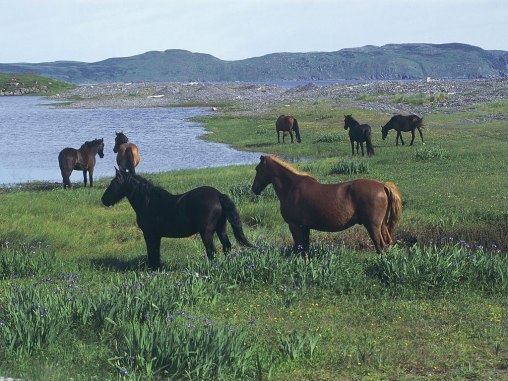By Ken Jennings, Condé Nast Traveler
In the early 18th century, the King of France claimed a huge swath of North America: more three million square miles, in fact. The Viceroyalty of New France stretched from Hudson Bay all the way west to modern-day Saskatchewan and south to modern-day Texas. A series of military defeats and treaties eventually handed the land over to Spain and Britain. But what if a few tiny specks of it remained? Let's visit all that's left of New France: a windswept archipelago of islands in the North Atlantic not much bigger than Washington, D.C.
About six thousand people still live on the archipelago of Saint Pierre and Miquelon, just 12 miles off the coast of Newfoundland. Even though they're more than 2,300 miles from the motherland, these French citizens still sing "La Marseillaise," vote in French national elections, and do business in Euros.
France still claims sovereignty over a handful of overseas territories, notably in Polynesia, but Saint Pierre and Miquelon are the only French soil left north of the Caribbean. (Other than, you know, actual France.) The British occupied the islands off and on over the years, but they've officially belonged to France since the end of the Napoleonic Wars. The current residents are descendants of French fishermen who settled there around 1816.
There was one final invasion of Saint Pierre and Miquelon in 1941, when Charles de Gaulle sent a submarine and three warships to take the islands back from the Nazi-controlled government of Vichy France. The operation was a complete success, and the islanders voted overwhelmingly to join Free France, making them one of the first places liberated from Axis control during World War II. But President Roosevelt was annoyed to have the French unilaterally launching military operations in the Americas, and never fully trusted de Gaulle again.
In 1888, the islands were the site of the Western Hemisphere's North America's only guillotine execution ever. Two drunk fishermen stabbed their captain, robbed him, and fled for Newfoundland. But rough seas forced them back to Saint Pierre, where they stood trial and one was condemned to death. A guillotine was shipped in from France and two recent immigrants convinced to serve as executioners. The beheading went off without a hitch -- except that the blade didn't sever the head all the way and the job had to be finished with a knife. I know; it's a pretty dull story.
More from Condé Nast Traveler:
